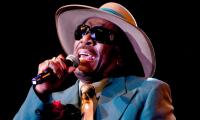Just before he clinched a deal to buy Twitter for about $44bn last week, Elon Musk suggested that he might jettison the platform’s limits on speech including ‘hateful content’ and abuse. “Is someone you don’t like allowed to say something you don’t like?” he asked sardonically. “It’s damn annoying, but that is the sign of a healthy, functioning free speech situation.”
Musk didn’t specify which kinds of speech he meant, but he gave us an idea two weeks later by retweeting far-right critiques of two of Twitter’s executives. One contained images of Vijaya Gadde, the company’s general counsel and chief of content moderation, with text implying that she was biased against conservatives.
Some of Musk’s more than 84 million Twitter followers piled on, with vitriol and threats aimed at Gadde. Many of the hostile posts referred to her Indian background. Musk also replied approvingly to a tweet in which the far-right conspiracy theorist Mike Cernovich accused Twitter’s deputy general counsel of facilitating fraud.
Though Musk’s followers seemed to love those posts, others found them much worse than “damn annoying”. Dick Costolo, who was the company’s CEO from 2010 to 2015, tweeted after Musk derided Gadde, “What’s going on? You’re making an executive at the company you just bought the target of harassment and threats.”
Yet Costolo is no stranger to the say-what-you-like credo. About a decade ago, Costolo began referring to the platform as the “free speech wing of the free speech party,” meaning that Twitter wanted to let people post as they wished, and the company avoided removing tweets or accounts.
In subsequent years, Twitter backed away from that hands-off position, as users protested at how much people were being attacked on the platform. Among innumerable examples, Robin Williams’s 25-year-old daughter Zelda received graphic, horrifying tweets blaming her for his suicide in 2014.
During that period, Twitter staff began rewriting the platform’s rules to prohibit ‘targeted harassment’ and ‘glorification of violence’. It was under the latter that former President Donald Trump was finally removed from the platform, after the January 6, 2021 riot at the US Capitol.
Still, Twitter continues to be used to attack individuals across the globe. And there’s another ocean of harmful content: frightening, usually false information about groups of people.
I study this sort of content, which I have dubbed “dangerous speech”, for its capacity to inspire violence between groups of people. Dangerous speech forms a category because it is strikingly similar from one case to another, across languages, cultures, and even time periods. At the Dangerous Speech Project, an independent research team I founded, we have identified innumerable examples, many of which have been followed by killings and even genocide.
We seek the best ways to blunt the power of dangerous speech, online and offline. Musk taking over Twitter doesn’t look like one of them, to say the least. Our team has found that when incendiary content goes viral, it can easily reach susceptible audiences open to committing violence offline. On Twitter, a frightening message can be boiled down into a memorable hashtag. Following such hashtags and related tweets, people around the world have been tortured and killed.
Excerpted: ‘Why Elon Musk’s Twitter might be (more) lethal’. Courtesy: Aljazeera.com
Land disputes in Kurram date back to the 1930s, with conflicts over grazing rights and access to water
I do not know how things work at school these days, but in my time, we used to read short stories, underline difficult...
Uraan Pakistan initiative offers a roadmap to turn challenges into opportunities, transforming aspirations into...
Automation enables mass production of goods to achieve greater efficiencies and allows pricing them within purchasing...
Election results in other countries last year forced many rulers of past to taste fruits of their karma
On December 21, Trump unleashed fresh salvo, lambasting Panama for its "unfair" canal fees







